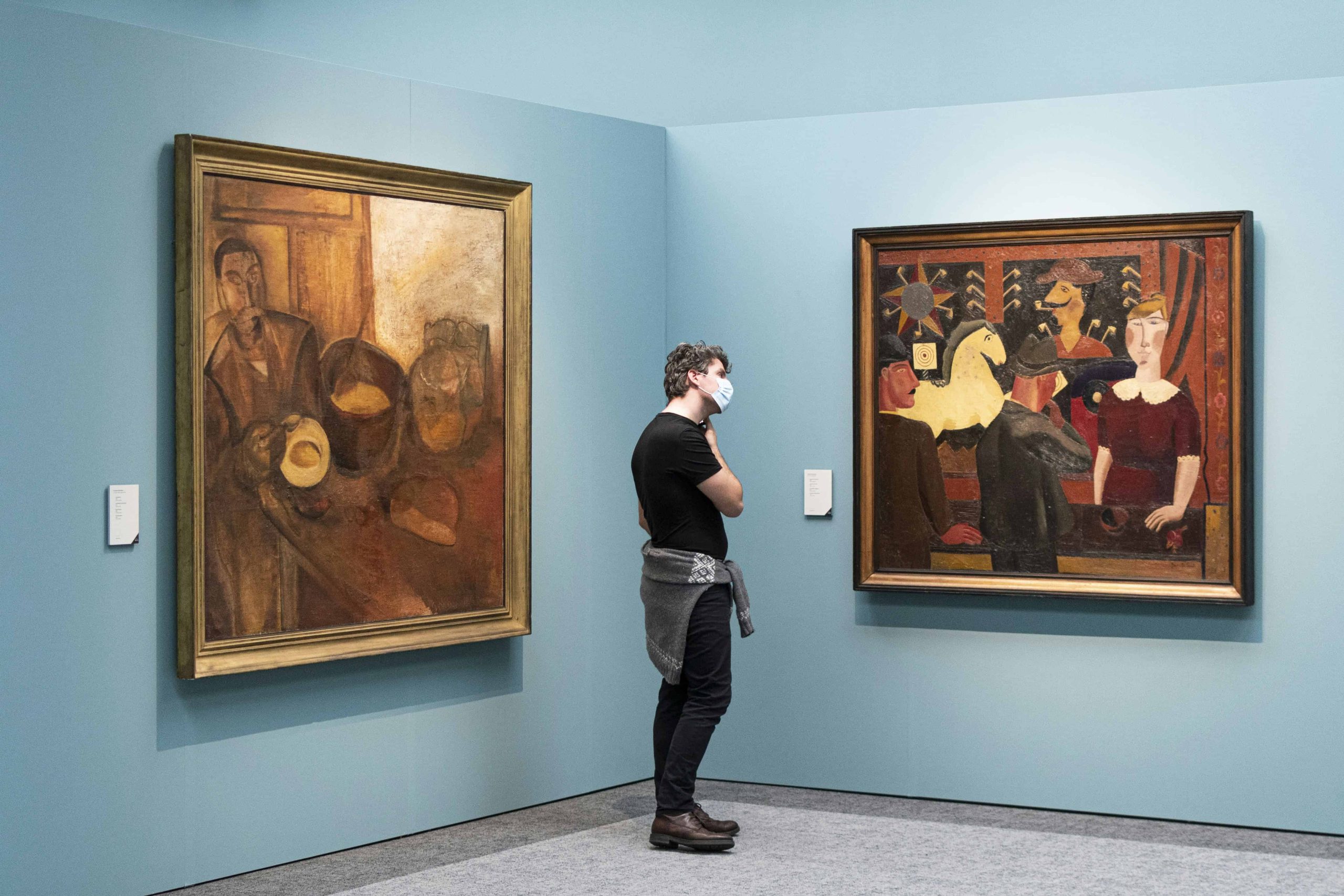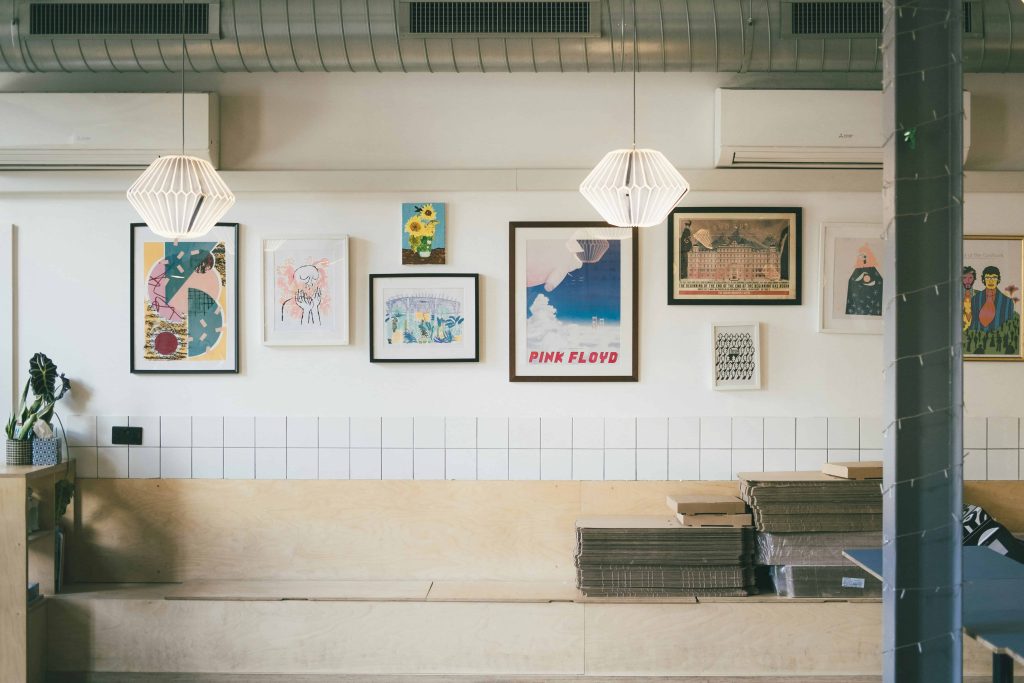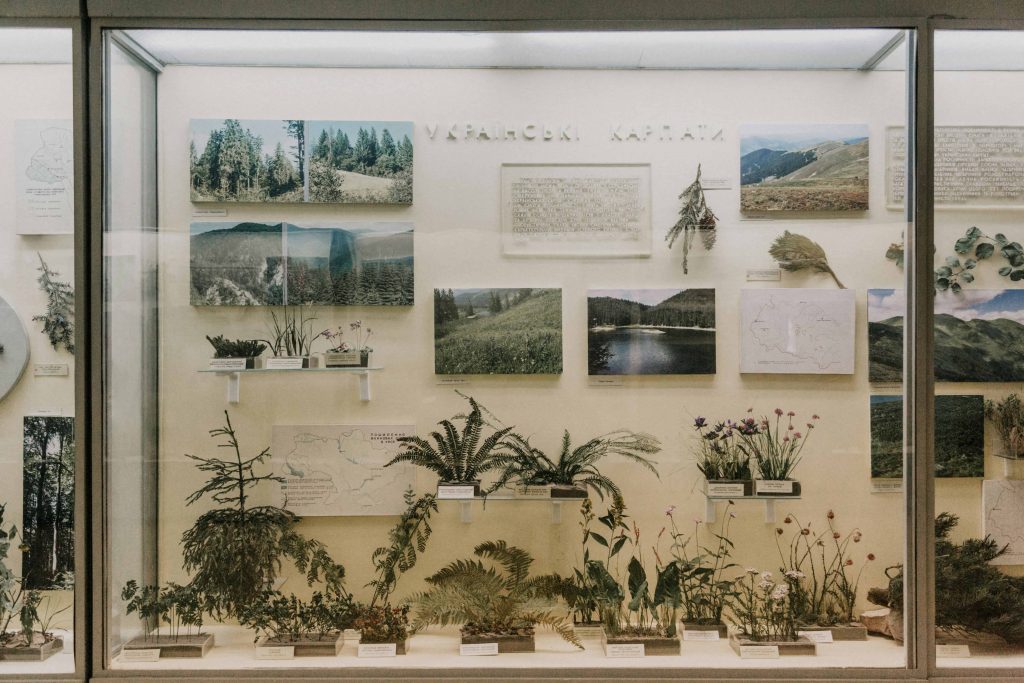
02 Oct Art Handling and Safety in Exhibitions
The Ultimate Guide to Safe and Effective Art Handling in Exhibitions
Proper art handling is crucial for the preservation of artworks, ensuring their longevity and integrity for future generations. During exhibitions, artworks are at significant risk of damage if not handled correctly. This article delves into best practices and safety measures essential for art handling in exhibitions, covering environmental considerations, handling procedures, security, visitor management, and emergency preparedness.

Environmental Considerations
Maintaining stable temperature and humidity levels is vital for the preservation of various art materials. Fluctuations can cause materials to expand and contract, leading to cracks, warping, or other forms of degradation. For most artworks, a temperature range of 68-72°F (20-22°C) and a relative humidity of 50-55% are ideal. Specific materials may require tailored conditions; for example, paper-based art often needs lower humidity levels to prevent mold growth. Proper lighting is essential to prevent damage from light exposure, which can cause fading and deterioration, particularly with sensitive materials like textiles and paper. Light levels should be limited to 50-150 lux for light-sensitive materials and 200-300 lux for more robust items, and UV filtration should be employed to block harmful ultraviolet rays.
Art Handling Procedures
Comprehensive training for art handlers is necessary to ensure they understand the specific needs of different artworks. Training should cover the proper use of tools and equipment, as well as emergency procedures. Thorough inspection and documentation of each artwork’s condition before transport help identify any pre-existing damage and establish a reference for post-transport assessment. High-quality packing materials and custom-built crates provide maximum protection during transport, with considerations for cushioning, stabilization, and climate control within crates. During installation, proper lifting techniques and appropriate equipment, such as dollies, cranes, and rigging systems, should be used to prevent accidents and damage. Selecting appropriate mounting hardware and hanging systems based on the artwork’s size, weight, and material ensures secure installation. Position artworks, considering factors like distance from walls, visitor flow, and accessibility, to prevent collisions and provide a safe viewing environment.

Security and Visitor Management
Implementing robust security measures is essential to protecting artworks from theft, vandalism, and other risks. Alarms and surveillance cameras should be installed to monitor the exhibition space continuously, using motion detectors and glass break sensors for added security. Access to storage and exhibition areas should be restricted to authorized personnel only, employing electronic access control systems for precise monitoring. Effective visitor management ensures a safe environment for both the artworks and the visitors. Clear signage and physical barriers should guide visitor movement and prevent touching or close proximity to the artworks. Barriers such as ropes or glass cases provide an additional layer of protection. Staff should be trained to educate visitors about the importance of not touching artworks and to manage crowd flow effectively. They should also be equipped to handle emergencies and unexpected situations.
Emergency Preparedness
Having a comprehensive disaster plan is crucial to mitigating damage during emergencies such as fires, floods, or earthquakes. Develop and regularly update emergency response plans for various scenarios, and conduct drills and training sessions to ensure all staff are prepared. Implementing proactive measures can significantly reduce the impact of potential disasters. In regions prone to earthquakes, ensure artworks are packed and displayed to withstand tremors using seismic brackets and other stabilizing equipment. Establish procedures for dealing with spills or leaks to prevent damage to artworks, and ensure quick access to materials like absorbent pads and protective coverings.

Conclusion
The successful handling and exhibition of art require collaboration among various professionals, including curators, conservators, handlers, and security personnel. Ongoing monitoring and risk assessment are crucial to ensuring the safety and preservation of artworks during exhibitions. By adhering to best practices in environmental control, handling procedures, security, visitor management, and emergency preparedness, museums and galleries can protect their valuable collections and provide an enriching experience for visitors.
Key Takeaways
- Crucial for Preservation:
- Proper handling ensures the longevity and integrity of artworks during exhibitions.
- Environmental Control:
- Maintain stable temperature (68-72°F) and humidity (50-55%).
- Specific conditions for materials like paper.
- Control light exposure with appropriate lux levels and UV filtration.
- Handling Procedures:
- Train handlers on tools, equipment, and emergency procedures.
- Inspect and document artworks before transport.
- Use quality packing materials and secure installation techniques.
- Security and Visitor Management:
- Implement robust security: alarms, cameras, restricted access.
- Use signage and barriers to manage visitors.
- Train staff to educate visitors and handle emergencies.
- Emergency Preparedness:
- Develop and update disaster plans for fires, floods, and earthquakes.
- Conduct regular drills and training.
- Implement proactive measures like seismic brackets and spill procedures.
- Collaboration and Monitoring:
- Collaboration among professionals is key.
- Continuous monitoring and risk assessment ensure safety.
FAQs
What environmental conditions are ideal for preserving artworks during exhibitions?
Ideal conditions include a temperature range of 68-72°F (20-22°C) and a relative humidity of 50-55%. Specific materials may need different settings; for example, lower humidity for paper-based art. Light levels should be 50-150 lux for sensitive materials and 200-300 lux for sturdier items, with UV filtration to prevent damage.
How can museums ensure the safe handling and transport of artworks?
Safe handling and transport involve training handlers on specific needs, inspecting and documenting artwork conditions, using high-quality packing materials and custom crates, and employing proper lifting techniques and equipment. Secure installation requires appropriate mounting hardware and systems based on the artwork’s characteristics.
What security measures should be implemented to protect artworks in exhibitions?
Security measures include continuous monitoring with alarms and cameras, restricting access to authorized personnel, and managing visitor flow with clear signage and barriers. Staff should educate visitors, control crowds, and be ready to handle emergencies.
Meet the visionary artists who are pushing the boundaries of creativity and innovation within virtual galleries and digital platforms.

